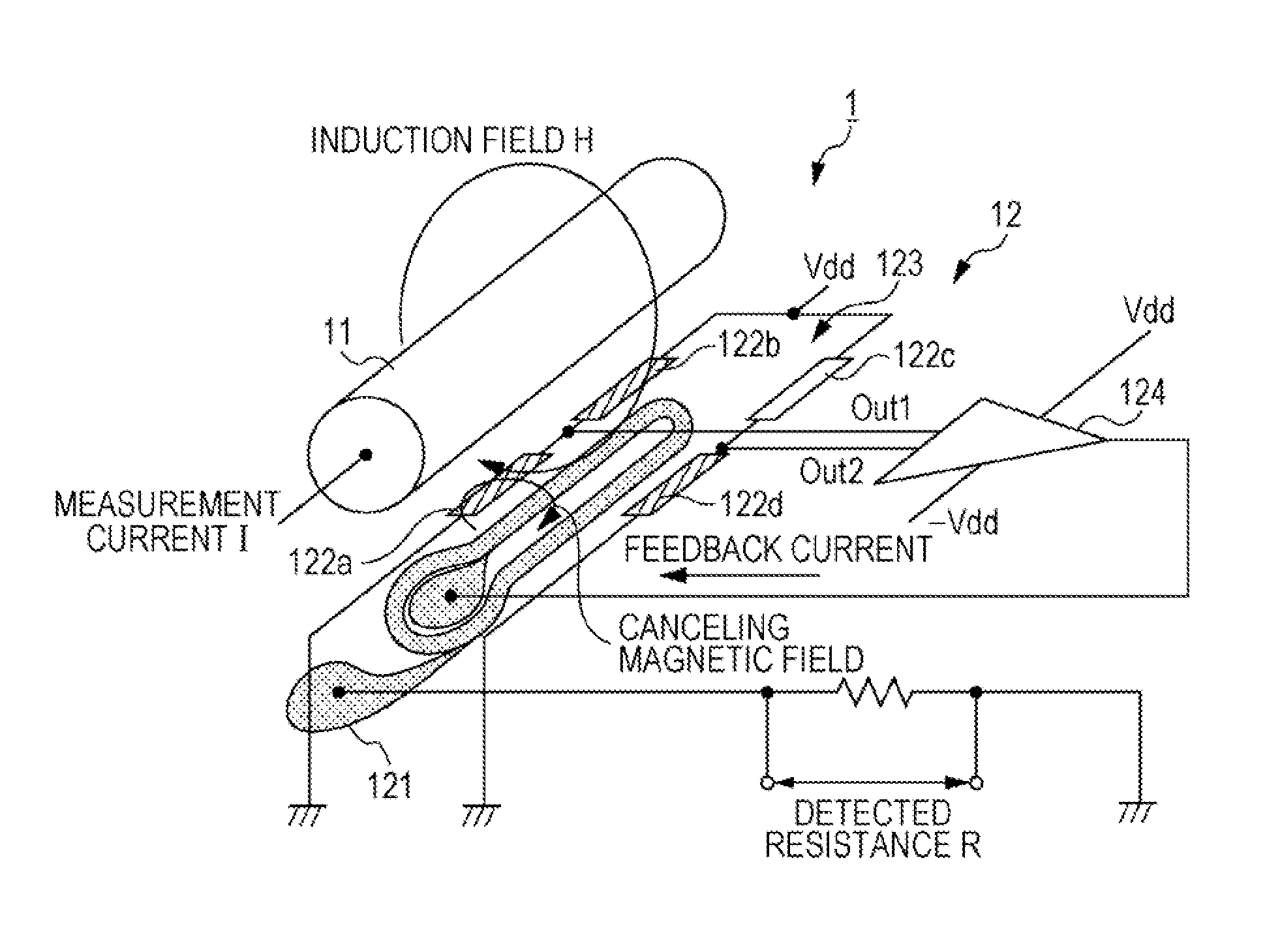Current sensor
a current sensor and current technology, applied in the field of current sensors, can solve the problems of insufficient reduction of hysteresis and offset of output signals, and achieve the effect of reducing hysteresis
- Summary
- Abstract
- Description
- Claims
- Application Information
AI Technical Summary
Benefits of technology
Problems solved by technology
Method used
Image
Examples
Embodiment Construction
[0029]Further improvement of measurement accuracy in a current sensor including magnetoresistive elements requires a reduced hysteresis in a magnetoresistive element, and also requires that the zero-field resistance values (R0) and the temperature coefficients of resistance (TCR0) in a zero magnetic field agree among the elements in a full-bridge circuit which is constituted by four elements such as magnetoresistive elements.
[0030]In a current sensor including magnetoresistive elements, a hard bias layer is formed to provide uniaxial anisotropy for a free magnetic layer, enabling reduction in hysteresis. In contrast, when a hard bias layer and a free magnetic layer are stacked one on top of the other, a contact portion which is in the free magnetic layer and with which the hard bias layer is in contact is strongly and firmly magnetized to form a dead zone for the external magnetic field. Therefore, this dead zone makes it difficult to reduce the hysteresis.
[0031]When a portion of a ...
PUM
 Login to View More
Login to View More Abstract
Description
Claims
Application Information
 Login to View More
Login to View More - R&D
- Intellectual Property
- Life Sciences
- Materials
- Tech Scout
- Unparalleled Data Quality
- Higher Quality Content
- 60% Fewer Hallucinations
Browse by: Latest US Patents, China's latest patents, Technical Efficacy Thesaurus, Application Domain, Technology Topic, Popular Technical Reports.
© 2025 PatSnap. All rights reserved.Legal|Privacy policy|Modern Slavery Act Transparency Statement|Sitemap|About US| Contact US: help@patsnap.com



